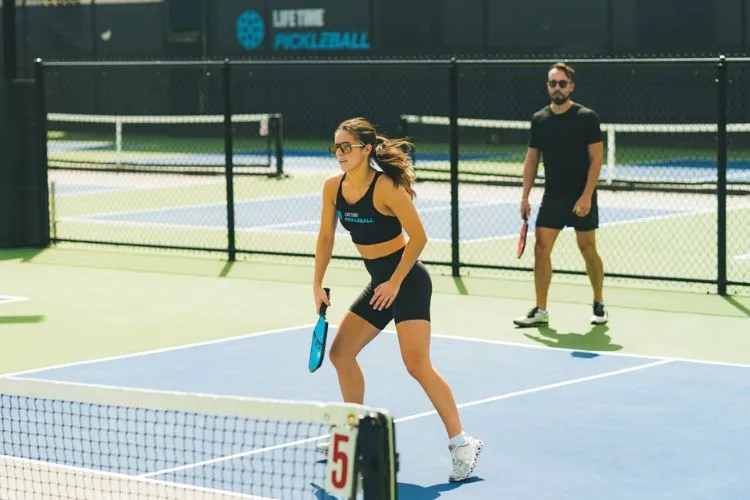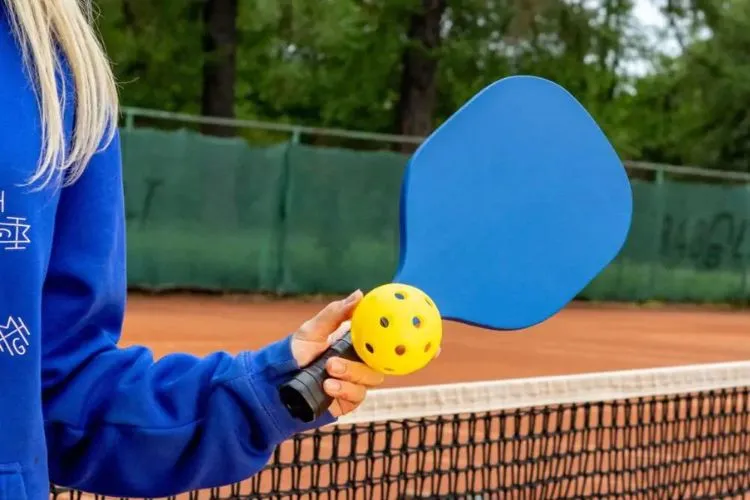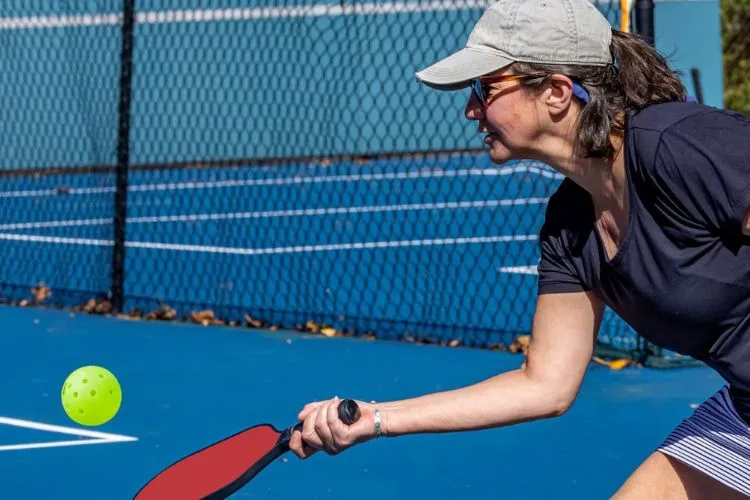The thrill of Pickleball lies not just in its simplicity, but also in its technical intricacies — one of which is ‘spike’. So, what is a spike in pickleball?
Though often overlooked, mastering this effectual stroke can heavily influence one’s Pickleball gameplay.

This article delves into the world of Pickleball spikes, their mechanics, and strategic employment, transforming your playing style into a formidable force.
Buckle in and ready your paddles; we’re about to elevate your Pickleball prowess in a way you’ve never anticipated.
What is a spike in pickleball?
In pickleball, a spike refers to an assertive overhead shot hit with force and precision, sending the ball spiraling downwards towards the opponent’s half of the court.
Primarily used as an offensive strategy, the spike shot is executed to diminish the opponent’s reaction time, putting them on the back foot.
This strong shot is typically carried out close to the net, demanding a high degree of timing, hand-eye coordination, and paddle control from the player.
While the risk of the shot hitting the net or flying out of bounds is present, a well-timed and accurately placed spike can substantially disrupt the opponent’s rhythm and tilt the game in your favor.
Employing the spike shot effectively can add a dynamic and potent aspect to your pickleball game.
Apologies for the misunderstanding. Here is the revised version with at least 80 words under all subheadings.
Improving Your Pickleball Spike: A Simple Guide
Boost your pickleball spike skill with these straightforward tips and drills.

Basic Stance
A strong stance builds a foundation for your spike. Stand near the net for optimal results. Place your feet shoulder-width apart, distributing your body weight evenly. This even weight distribution will enhance your balance and agility.
Bend your knees slightly, which gives you more mobility and helps you generate power as you move. Maintaining this basic stance is critical for improving both your defensive and offensive play, particularly when you want to execute an effective spike.
Proper Grip
A secure and comfortable grip is essential for shot control. Hold the paddle with a firm yet relaxed grip. Avoid gripping too tight as this can lead to fatigue and reduced wrist mobility.
The ideal grip comprises the “Eastern Grip,” positioning the paddle’s base knuckle of the index finger on the third bevel of the handle.
This grip promotes improved shot accuracy and control. The ability to execute a powerful spike relies heavily on the solidity of your grip and your ability to maintain it while playing.
Track the Ball
Improving your pickleball spike requires excellent hand-eye coordination. Train yourself to continuously follow the ball’s trajectory during games. This habit not only impacts your spike but also your overall game.
To practice ball tracking, stand at the net and have a partner or coach throw or hit balls at you. Keep your eye on the ball as it approaches, timing your swing to line up with the ball’s arc.
Consistent tracking of the ball will improve your hitting accuracy and boost your pickleball spike performance.
Timing Matters
Perfect timing is an essential element of an effective spike. Aim to strike the ball when it reaches its highest point, or the apex of its arc, for maximum downward force.
Proper timing minimizes mishits, faults, and game errors, as well as maximizes the speed and accuracy of your spike.
Timing also contributes to the correct paddle angle and body positioning for a successful shot. Practicing consistent timing will help you hit powerful, precise pickleball spikes in your future matches.
Be Accurate
Good aim increases the chances of a successful spike. Direct your spikes towards your opponent’s feet, forcing them to make quick and challenging return decisions.
An accurate spike is hard to return and often results in a point for your side. Spend time practicing various targets and angles.
This training will help you find the most effective targeting strategy for different opponents. As you develop your aim and precision, your pickleball spike will become increasingly powerful and challenging for your opponents to counter.
You May Also Find Interesting: What is a Chop in Pickleball? | 14 Types Of Pickleball Shots
Helpful Drills

Drill 1: Wall Practice
A wall is a fantastic training tool when no partner is available. Practice your spikes by hitting the ball against the wall, then spiking it upon the rebound. Repeat the process to improve your strength and timing.
Make sure to maintain proper form and footwork during this drill. The more you practice, the more muscle memory you’ll build, helping you execute precise spikes during your games.
Drill 2: Partner Drill
Recruit a partner to accelerate your spike practice. In this drill, your partner throws or lobs the ball over the net. Your goal is to execute an effective spike when the ball descends.
This drill simulates real-game scenarios, refining your ability to react quickly and accurately during actual matches. Work together with your partner on coordinating these drills – the better your rapport, the more likely your skills will develop in tandem.
Continuous practice fosters powerful and precise spikes. Remember, persistence is key. With diligent practice and dedication, your pickleball spike will improve significantly. Good luck on your journey!
Can you spike in the kitchen in pickleball?
In pickleball, the “kitchen,” or the non-volley zone, has specific rules about strike types. Spiking, an overhead shot performed with force, is not permitted within the kitchen.
In the non-volley zone, players cannot hit the ball mid-air; it must bounce once before they can hit it.

Anything making contact with the kitchen zone while hitting the ball in mid-air is a fault, including the paddle, clothing, or any accouterments.
Even if your momentum brings you into the kitchen after volleying a ball, it’s considered a fault.
So, to answer directly: you cannot execute a spike in the kitchen in pickleball according to official rules. To maintain fair play and enjoy the game, it’s essential to respect and follow these guidelines.
Conclusion:
A spike in pickleball is a powerful, downward shot that intimidates opponents and can lead to scoring opportunities. While similar to a smash in tennis, the spike has unique applications and limitations in pickleball due to the non-volley zone, or kitchen.
Mastering the spike requires practice, timing, and precision, and understanding the rules surrounding the kitchen is essential to using it effectively.
By incorporating spikes into your gameplay and respecting the regulations, you’ll elevate your skills and increase your chances of success on the court.

Pickleball’s more than a game to me—it’s a passion. I write, sharing its highs and lows, the thrills and the lessons. Some tales might draw you to the court, while others give a hint of the game’s magic. So, curious about my journey? Ready to dive deep into the world of pickleball with me? Let’s go.
